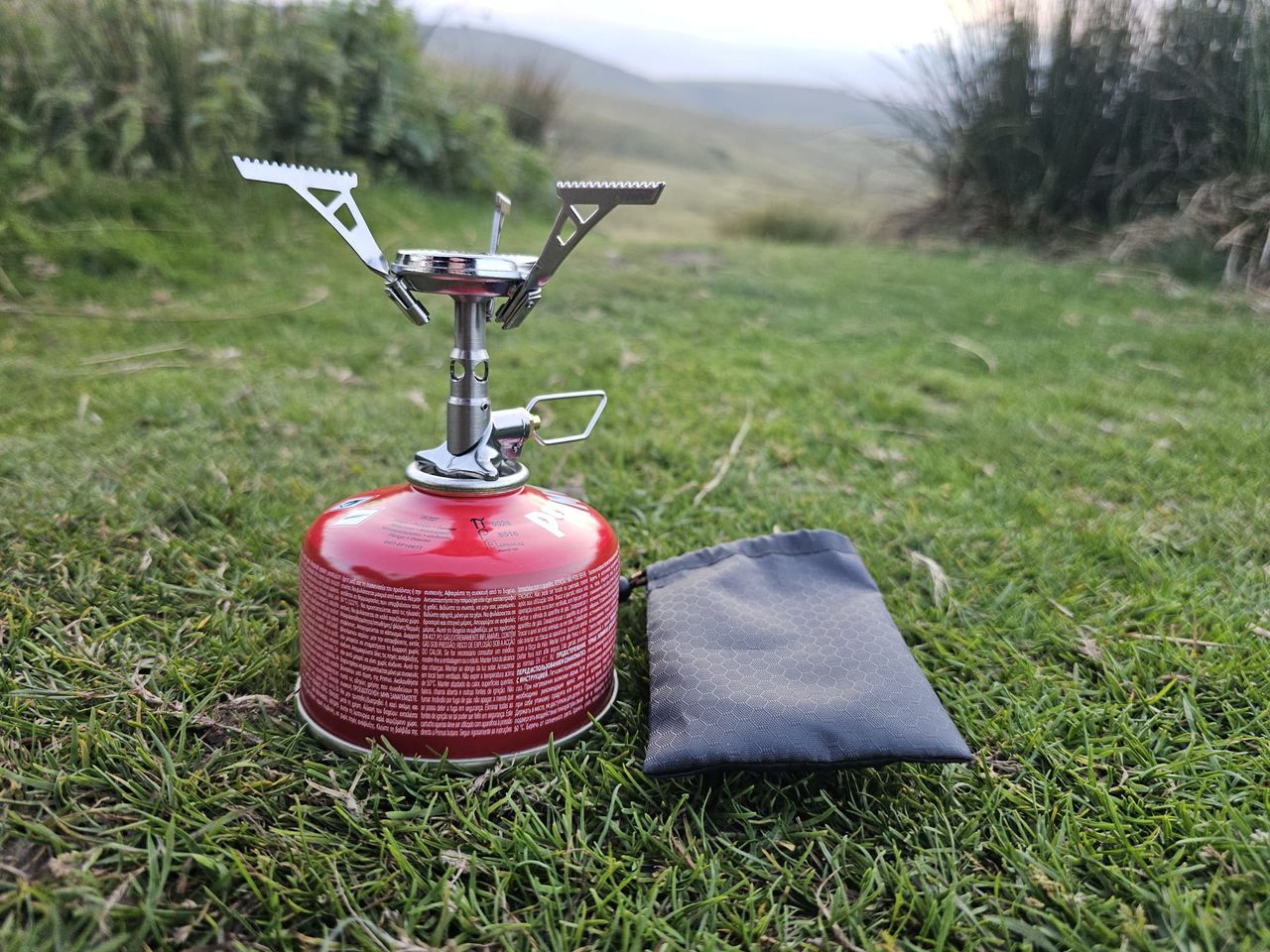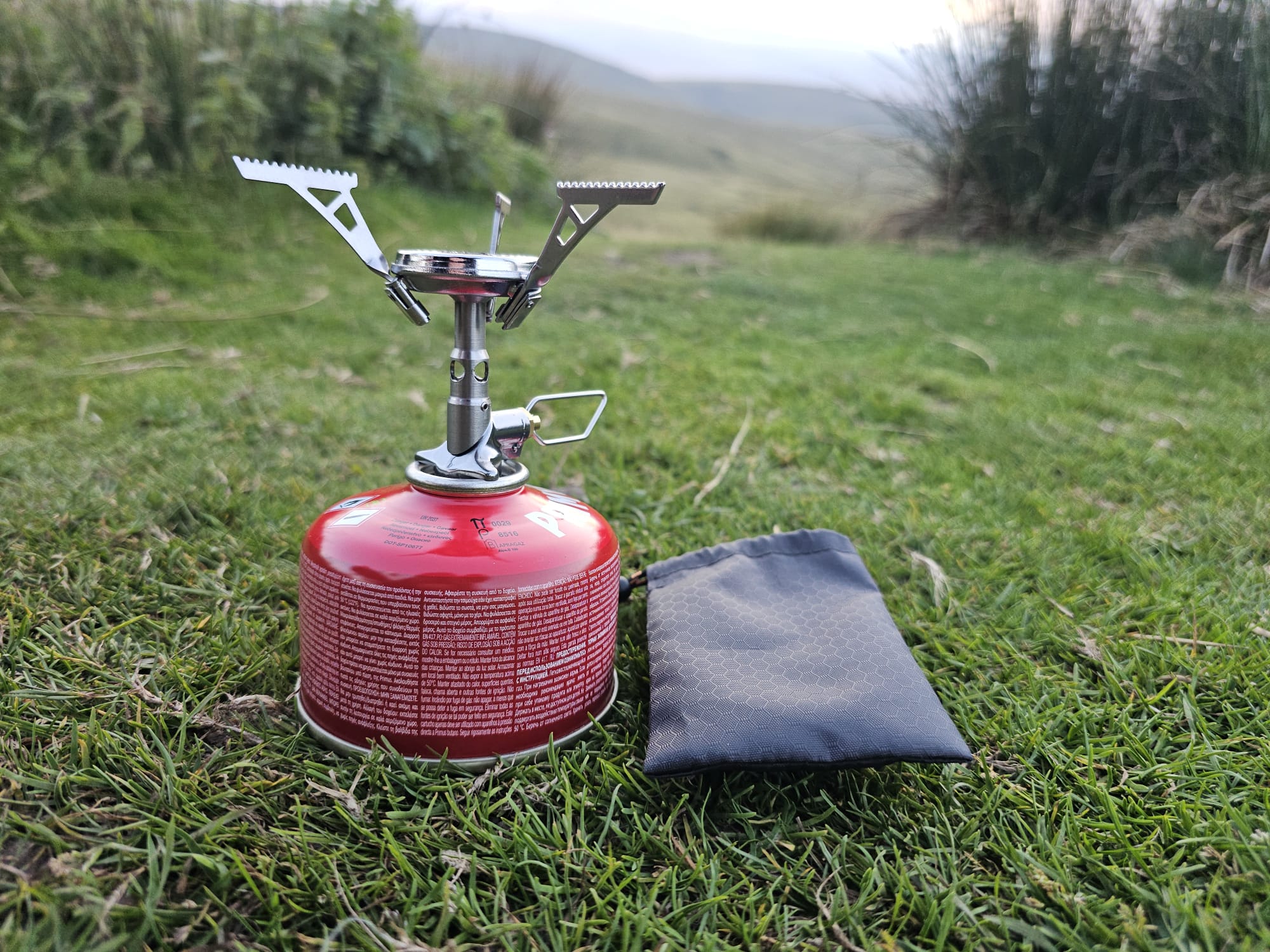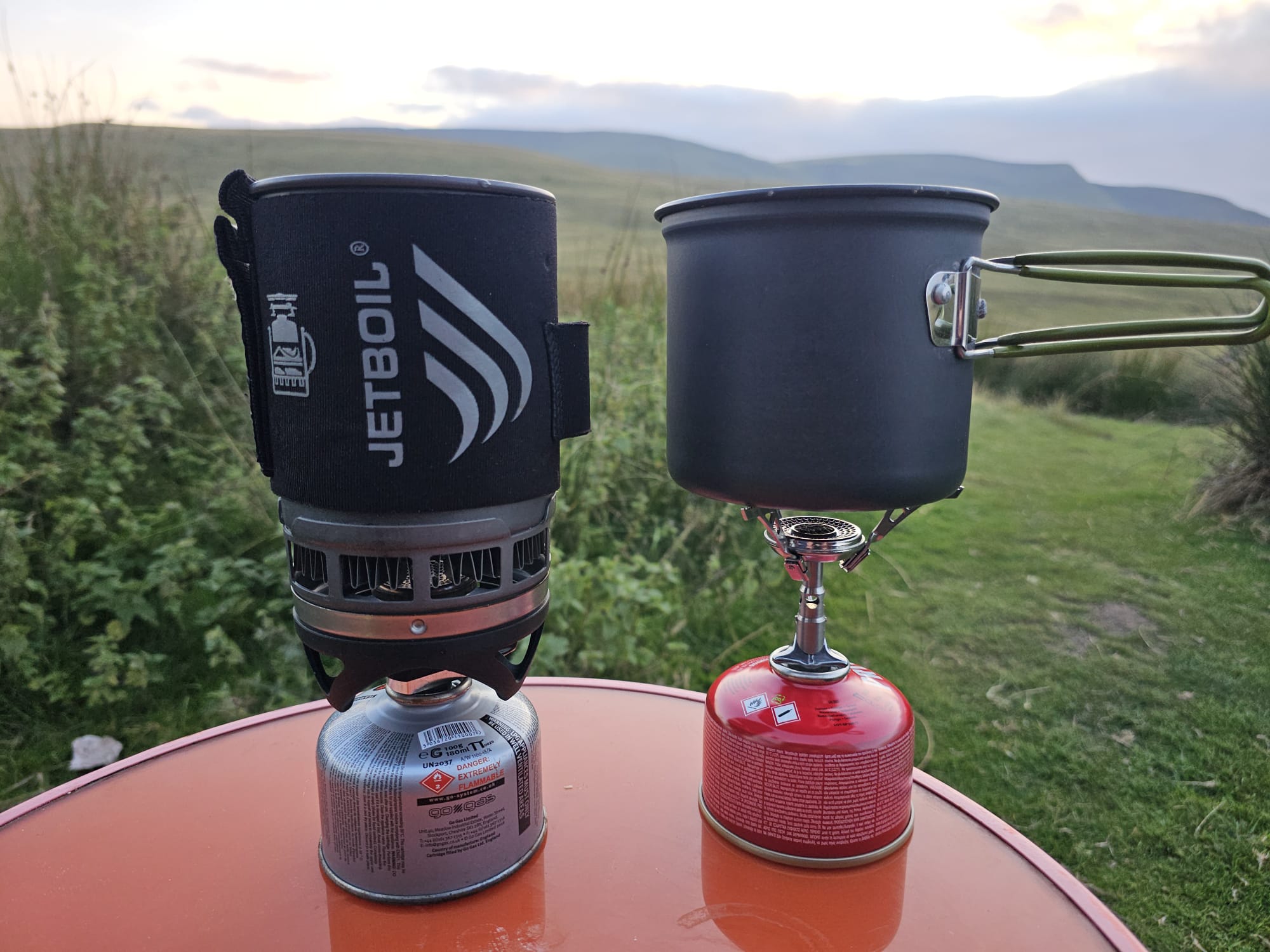
Primus Micron III: first impressions
My first experience with a camping stove was an old army surplus Trangia stove. It was battered and weighty and I can still remember my frustration as the phrase “a watched pot never boils” rattled around my head while the water for my coffee slowly transitioned from lukewarm to somewhere close to boiling without ever seeming capable for getting there.
Since then there have been incredible advancements to camping stove technology, whether you require something complex or simple. I tested the Primus Micron III over the summer, mainly using it for boiling water for dried hiking meals and much-needed morning coffee.
• List price: £60 (UK only)
• Fuel Type: Propane / isobutane
• Weight: 2.11oz (60g)
• Boil time (500ml water): 2 mins 27 secs
• Ignition: None
• Dimensions (stored): 2.44 x 1.61in (62 x 41mm)
• Extras: Storage bag, various Primus Trek pots available separately
The Micron III has a simple design that directly screws on top of a standard threaded gas canister. The three pot supports fold diagonally to ensure an ergonomic profile, and all lock into place with a satisfying click.
This model has no built in ignition or regulator. However Primus does have a version with an external matchstick style igniter at the cost of a little extra weight.
There is no gas regulator on either model however, so anyone planning to use this in very cold conditions should take note that this could affect the performance.

Weight and packability
The most notable feature of this stove is undoubtedly its weight (or lack of it) - coming in at 2.11oz (60g) with the included nylon bag and 2.01oz (57g) without if you are seriously counting grams.
Primus has used aluminium throughout the construction to keep the weight down. The dimensions of the stove are tiny too. At 2.44 x 1.61in (62 x 41mm) it fits snuggly in the palm of your hand. I kept the stove within my pot and gas system, but can see how easy it would be to lose such a small part of your gear if not kept somewhere safe.
Folded out for use, the stove sits at 3.14in (80mm) high with a 3.74in (95mm) wide base for your pot. Given the quite minimal dimensions of the stove when in use, it is more suited for wild camping where boiling water for dehydrated meals is the top priority, than using with heavy pans.
Cooking speed and functionality

The stove works as most do. You thread it on to the canister, turn the pleasantly grippy and oversized valve handle and ignite the gas. It took quite a few turns to get the flame to full power but the flame is highly directional and puts out 2600w of power with the valve fully open.
The flame is designed to be wind resistant, but I found that, as the stove stands so tall off the canister, that it can be quite susceptible to wind if there are strong gusts blowing. The stove sits at 5.5in (140mm) tall when attached to a standard 3.5oz (100g) canister, and I found this affected its stability. The flip side to this height is increased functionality when using a pan if you want to heat food directly rather than just boil water.

Primus claims that the stove can boil 500ml of water in 2 mins 30 secs. In sheltered conditions I was able to get the water boiling in 2 mins 27 secs. When using it in the porch of my tent however, with a whipping wind coming under, this stretched to between 2 mins and 50 secs to 3 mins and 15 secs. By comparison, my Jetboil took 2 mins 38 secs in sheltered conditions and 3 mins 37 secs when it was windy.
Primus recommends that you use its Essential Trek pots with this stove, as they have a slimmer profile and therefore in theory will boil quicker. The pot I was using was slightly wider than an Essential Trek pot, so it’s good to know there’s potential for the process to be sped up further. Overall, I found the power of the stove to pack quite a punch, even with slightly increased boil times due to the wind.








